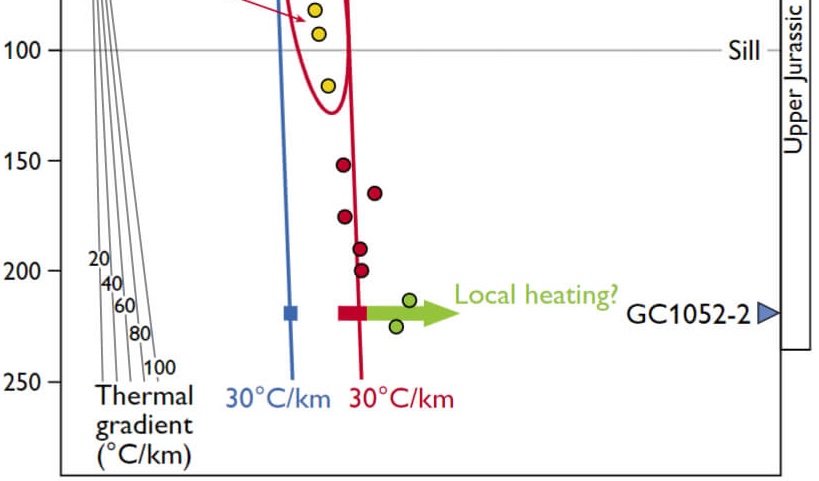
How to Cite
Share
Abstract
Apatite fission-track analysis (AFTA) data in two Upper Jurassic core samples from the 231 m deep Blokelv-1 borehole, Jameson Land, East Greenland, combined with vitrinite reflectance data and regional AFTA data, define three palaeo-thermal episodes. We interpret localised early Eocene (55– 50 Ma) palaeotemperatures as representing localised early Eocene heating related to intrusive activity whereas we interpret late Eocene (40–35 Ma) and late Miocene (c. 10 Ma) palaeotemperatures as representing deeper burial followed by successive episodes of exhumation. For a palaeogeothermal gradient of 30°C/km and likely palaeo-surface temperatures, the late Eocene palaeotemperatures require that the Upper Jurassic marine section in the borehole was buried below a 2750 m thick cover of Upper Jurassic – Eocene rocks prior to the onset of late Eocene exhumation. As these sediments are now near outcrop at c. 200 m above sea level, they have been uplifted by at least 3 km since maximum burial during post-rift thermal subsidence. The results are consistent with estimates of rock uplift on Milne Land since the late Eocene and with interpretation of Ocean Drilling Program (ODP) data off South-East Greenland suggesting that mid-Cenozoic uplift of the margin triggered the marked influx of coarse clastic turbidites during the late Oligocene above a middle Eocene to upper Oligocene hiatus.
How to Cite
Share
Copyright (c) 2018 Paul F Green, Peter Japsen

This work is licensed under a Creative Commons Attribution 4.0 International License.
Downloads
Editors: Jon R. Ineson and Jørgen A. Bojesen-Koefoed
The exposed Jurassic succession in East and North-East Greenland has long been presented as an analogue for equivalent deeply buried strata on the Norwegian conjugate shelf and offshore North-East Greenland. In particular, the Upper Jurassic marine mudstone succession is often ascribed source-rock potential as [...]









